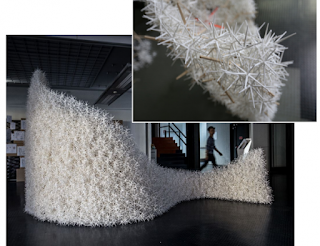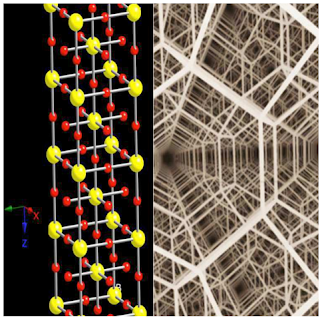Topics: Economy, Education, Jobs, Politics, STEM, Research
"What's past is prologue." William Shakespeare, The Tempest, Act II, scene i, Antonio
The last excerpt observation in the second article: it is now possible for the true believer to sail on an ocean of political, historical, and scientific disinformation without ever sighting the dry land of empirical fact. Does that presume once introducing them to facts it would sway them at all? A good (and sad read) is "When Prophesy Fails," by Leon Festinger. In sum, an earlier version of the "Heaven's Gate Cult" waited for the end of the world in the 1950s. When it did not happen, you had a group of them disappointed that defected; another that made up the excuse that their "vibrations" or faithfulness saved the world from extinction. It is the origin of the phrase cognitive dissonance, and my concern The Common Good shall become chaff in the wind to the authoritarian "do as I SAY!" That is the plot of a Dystopian science fiction novel; not a democratic republic. Desperate people do desperate things when their delusions are not fulfilled. Giving them power is pouring gasoline on a bonfire.
The past...
The Know-Nothing Party, also known as the American Party, was a prominent United States political party during the late 1840s and the early 1850s.
The American Party originated in 1849. Its members strongly opposed immigrants and followers of the Catholic Church. The majority of white Americans followed Protestant faiths. Many of these people feared Catholics because members of this faith followed the teachings of the Pope. The Know-Nothings feared that the Catholics were more loyal to the Pope than to the United States. More radical members of the Know-Nothing Party believed that the Catholics intended to take over the United States of America. The Catholics would then place the nation under the Pope's rule. The Know-Nothing Party intended to prevent Catholics and immigrants from being elected to political offices. Its members also hoped to deny these people jobs in the private sector, arguing that the nation's business owners needed to employ true Americans.
The majority of Know-Nothings came from middle and working-class backgrounds. These people feared competition for jobs from immigrants coming to the United States. Critics of this party named it the Know-Nothing Party because it was a secret organization. Its members would not reveal the party's doctrines to non-members. Know-Nothings were to respond to questions about their beliefs with, "I know nothing." [1]
The current prologue...
Tomasky expresses astonishment that Carson’s jaw-dropping comments make him more popular among Republican voters, but he concludes without fully answering the question he posed. It is an important question: what has happened to the American people, or at least a significant portion of them?
Anti-knowledge is a subset of anti-intellectualism, and as Richard Hofstadter has pointed out, anti-intellectualism has been a recurrent feature in American life, generally rising and receding in synchronism with fundamentalist revivalism.
Whether retail customers actually buy all these screeds, or whether foundations and rich conservative donors buy them in bulk and give them out as door prizes at right-wing clambakes, anti-knowledge infects the political bloodstream in the United States.
Thanks to these overlapping and mutually reinforcing segments of the right-wing media-entertainment-“educational” complex, it is now possible for the true believer to sail on an ocean of political, historical, and scientific disinformation without ever sighting the dry land of empirical fact. [2]
1. Ohio Central History: The Know-Nothing Party
2. BillMoyers.com: The GOP and the Rise of Anti-Knowledge, Mike Lofgren















